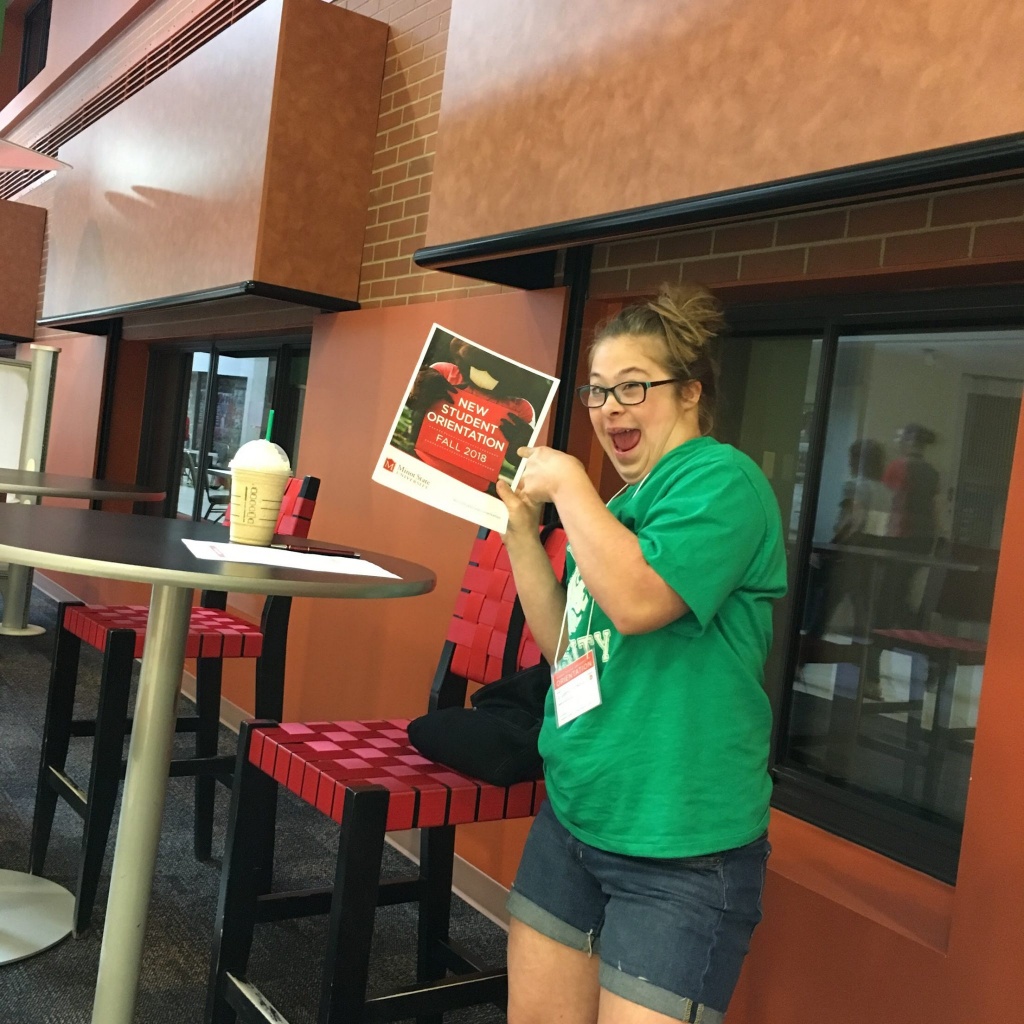 By Nicole Thom-Arens | Submitted Photos
By Nicole Thom-Arens | Submitted Photos
Liz Romanick is like many recent high school graduates: she recently voted in her first statewide election, she loves music, dancing, nachos, and she’s anxious to leave home and carve her own path. Unlike most of her peers, though, Liz has Down syndrome, so it hasn’t always been easy being like everyone else. But her mom, Roxane, knew from the time Liz was born that she wasn’t going to tiptoe around Liz having Down syndrome.
“I didn’t want anybody feeling sorry for us or her . . . so the first thing we did was just announce it to the world that she had Down syndrome, and we’ve just always lived that way,” Roxane says. “I always felt she should try to learn it the same way as anybody else, and then if that doesn’t work, we add to it versus right away thinking she can’t learn that way. That’s really paid off.”
In high school, Liz went on a choir trip to Universal Studios in Orlando with her peers. She cheered for hockey and football, and participated in bowling and track and field. This fall Liz will attend college at Minot State University through the ASTEP program. While she is sentimental about leaving her childhood home, Liz says she is excited, not nervous, about going to college.
“I can’t wait to see what my future holds for me,” Liz says. “I kind of have multiple majors—I want to go into music education, early childhood, and a little bit of public speaking.”
ASTEP—short for Advancing Students Toward Education and Employment Program—is coordinated by the North Dakota Center for Persons with Disabilities and offers two- to three-year programs for adults with intellectual disabilities. The program offers an opportunity to attend college and live on campus while emphasizing careers, academics, social and community goals, and independent living.
Liz is looking forward to learning independence through ASTEP and learning how to do things without her parents.
“I need that right now,” Liz says, with a laugh, about getting the opportunity to learn away from her parents.
“It’s very scary, but I think she has to do it because I don’t think you can learn without experience,” Roxane says in agreement. “I think it bothers me that I can’t anticipate what could happen. If something goes wrong, how’s it going to be okay? Even things that aren’t wrong, how are you (she says to Liz) going to negotiate coming home? What’s going to happen after ASTEP? Is this the right thing to do?”
For Liz, ASTEP is the key to her future. She yearns to be independent—she has her permit and is hoping to earn her driver’s license this fall. While ASTEP will provide supports to ensure Liz is grasping everything she needs in the classroom, both Liz and Roxane wonder if all the built-in supports are necessary. Roxane admits special education has evolved immensely since she began in the field in 1981, and when Liz was born 19 years ago, college wasn’t an option for a person with Down syndrome, but there’s still room for higher education to evolve and be more inclusive.
“It’s kind of a double-edged sword…but they don’t want people to not be successful,” Roxane says. “I heard this quote when she (Liz) was little from an African American: ‘You have to remember I’m black and forget that I’m black at the same time.’ That’s really applicable. You have to remember you have a disability and forget it at the same time, and that’s the dance.”
“My disability doesn’t come first,” Liz adds.
Both Roxane and Liz appreciate the availability of ASTEP, the most inclusive program in the four-state region, but both want more opportunities and more options.
“This year I will try it (college) with ASTEP, and next year I will try it without,” Liz says.
“We’ve (the field of special education) always had to have structured programs to break the mold, to challenge the status quo, so maybe that’s what ASTEP is,” Roxane says. “It’s the way to get on campus. Otherwise we wouldn’t be here today, but maybe in 15 years, we won’t need the federal grants because it’ll be the norm to figure out how to teach to everybody.”
About ASTEP:
Advancing Students Toward Education and Employment Program
Started at Minot State University in 2010
For students between ages 18-26
Students audit or take classes for credit at Minot State University or Dakota College in Bottineau
ASTEP is a grant funded through the U.S. Department of Education
17 students are signed up for fall 2018
Learn more at ndcpd.org/astep
[supsystic-gallery id=150] Nicole Thom-Arens is a writer and an assistant professor of communication arts at Minot State University where she teaches journalism and communication theory courses and advises the student newspaper the Red & Green.
Nicole Thom-Arens is a writer and an assistant professor of communication arts at Minot State University where she teaches journalism and communication theory courses and advises the student newspaper the Red & Green.
